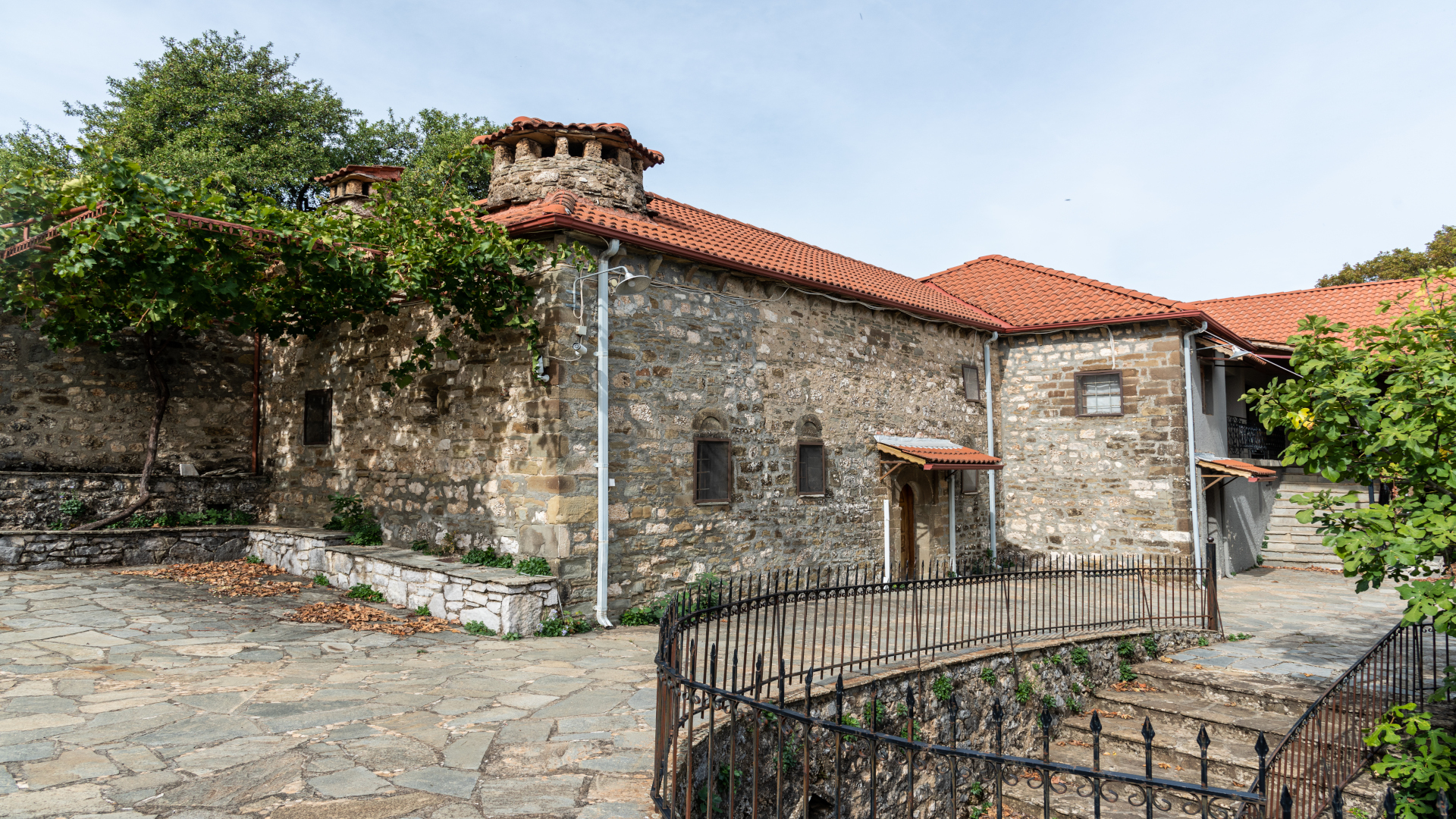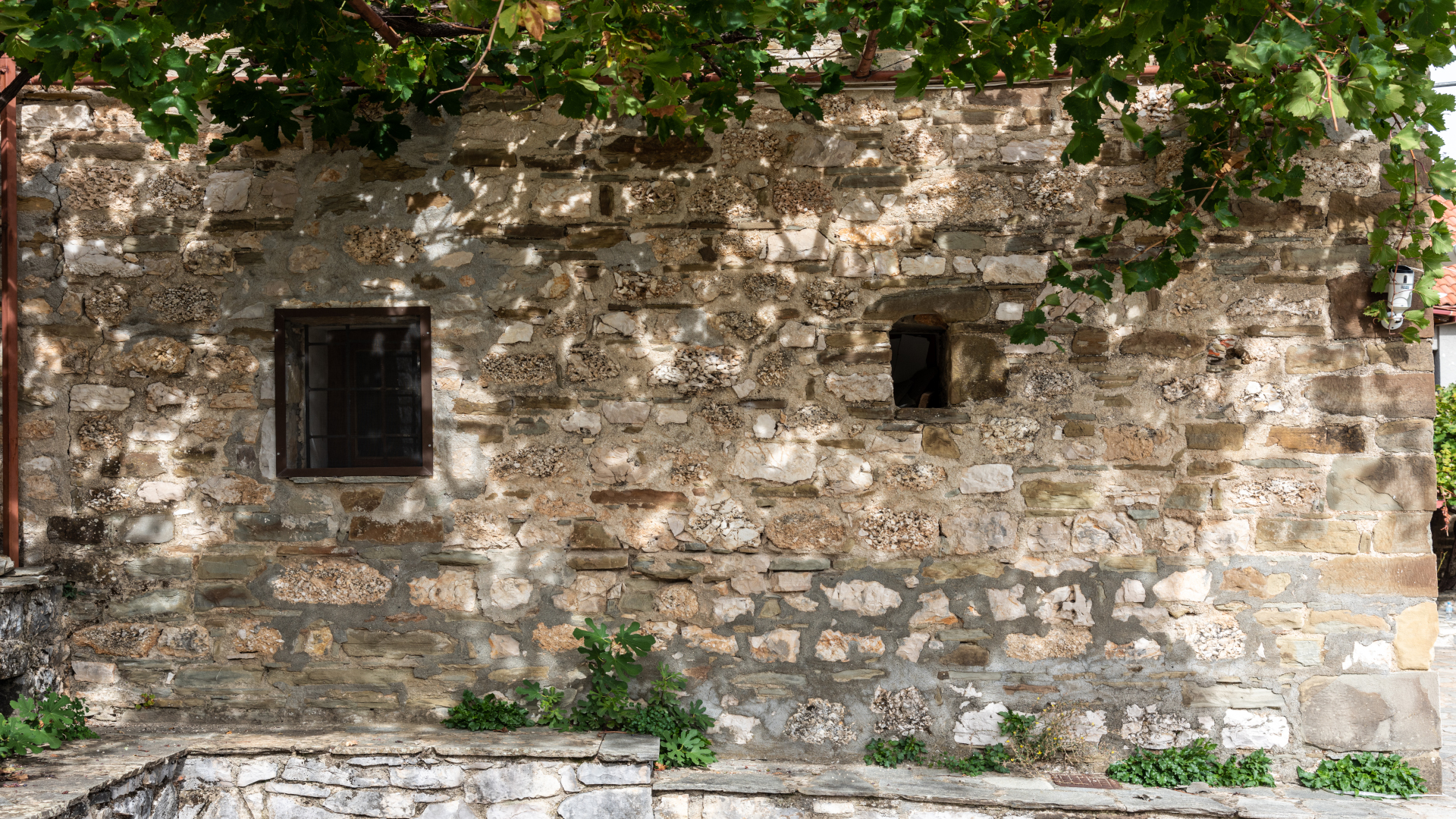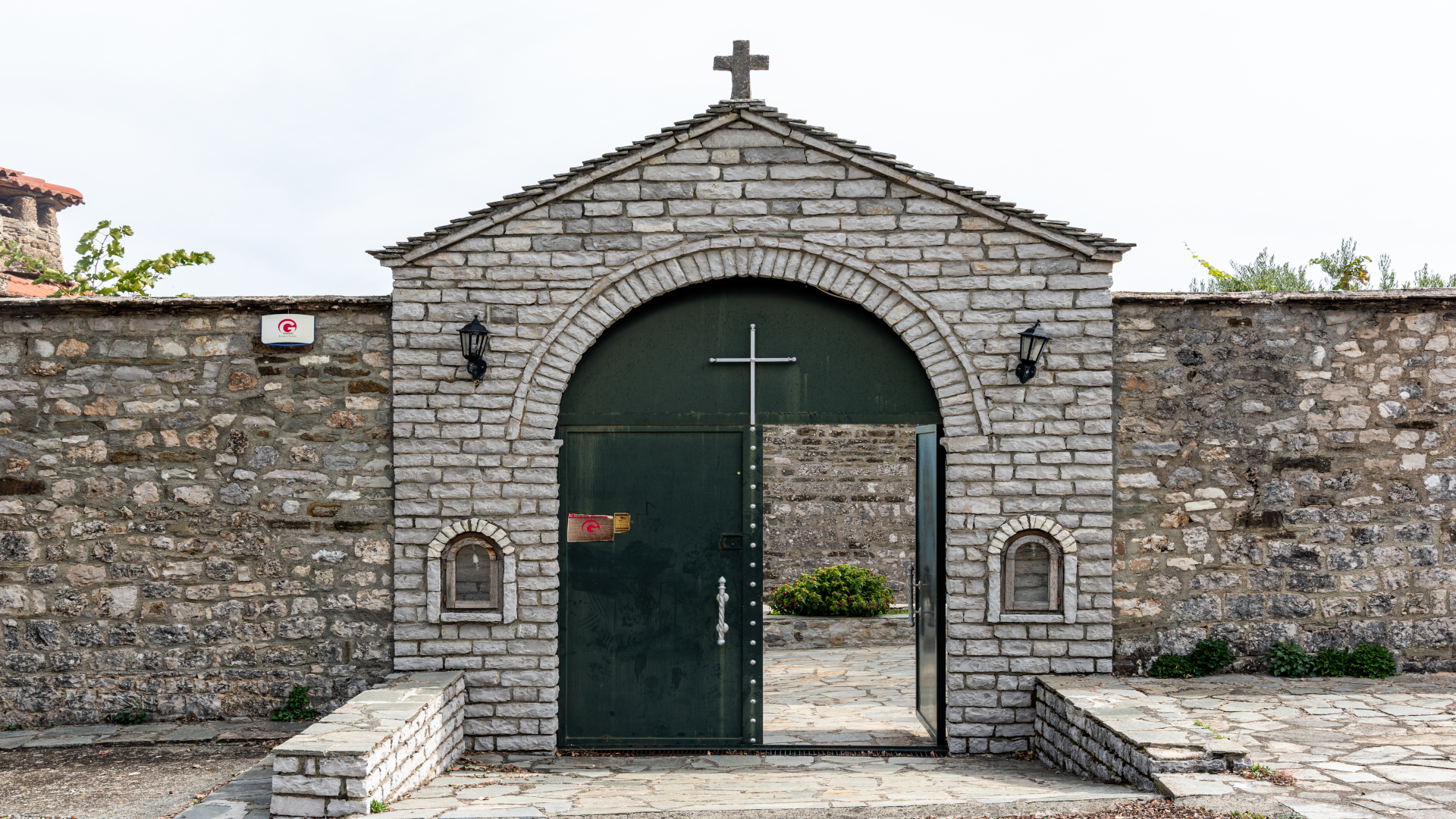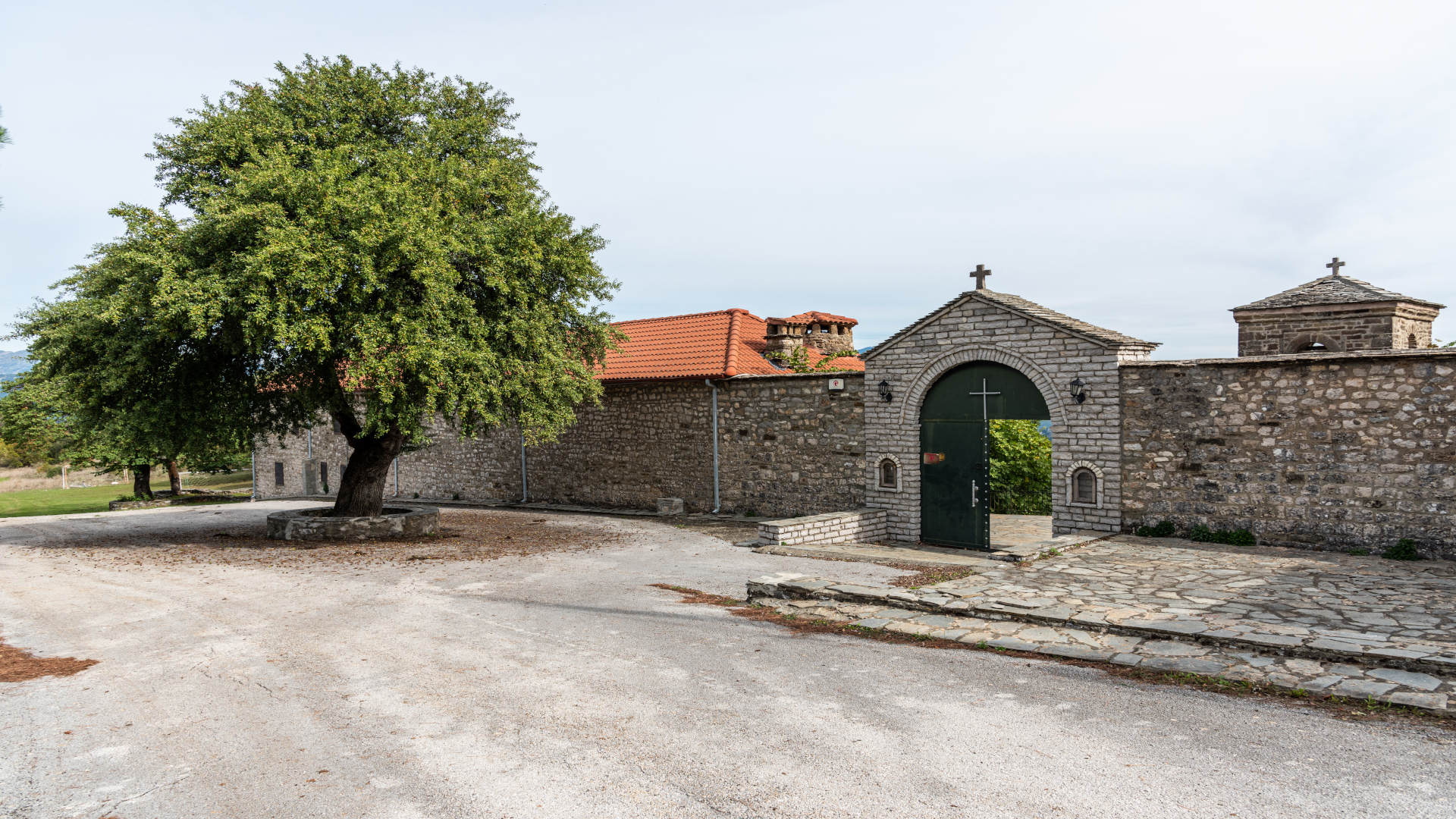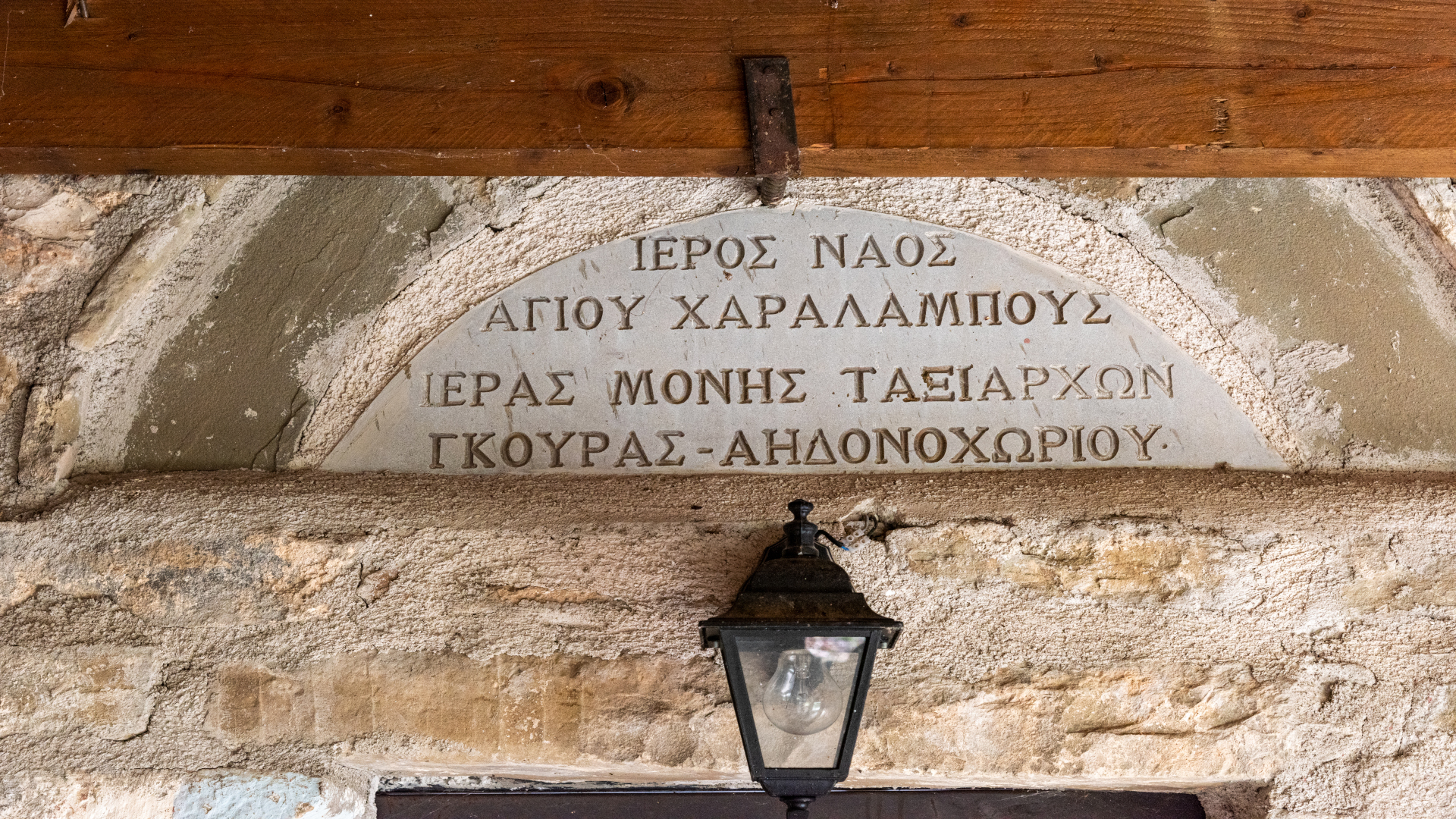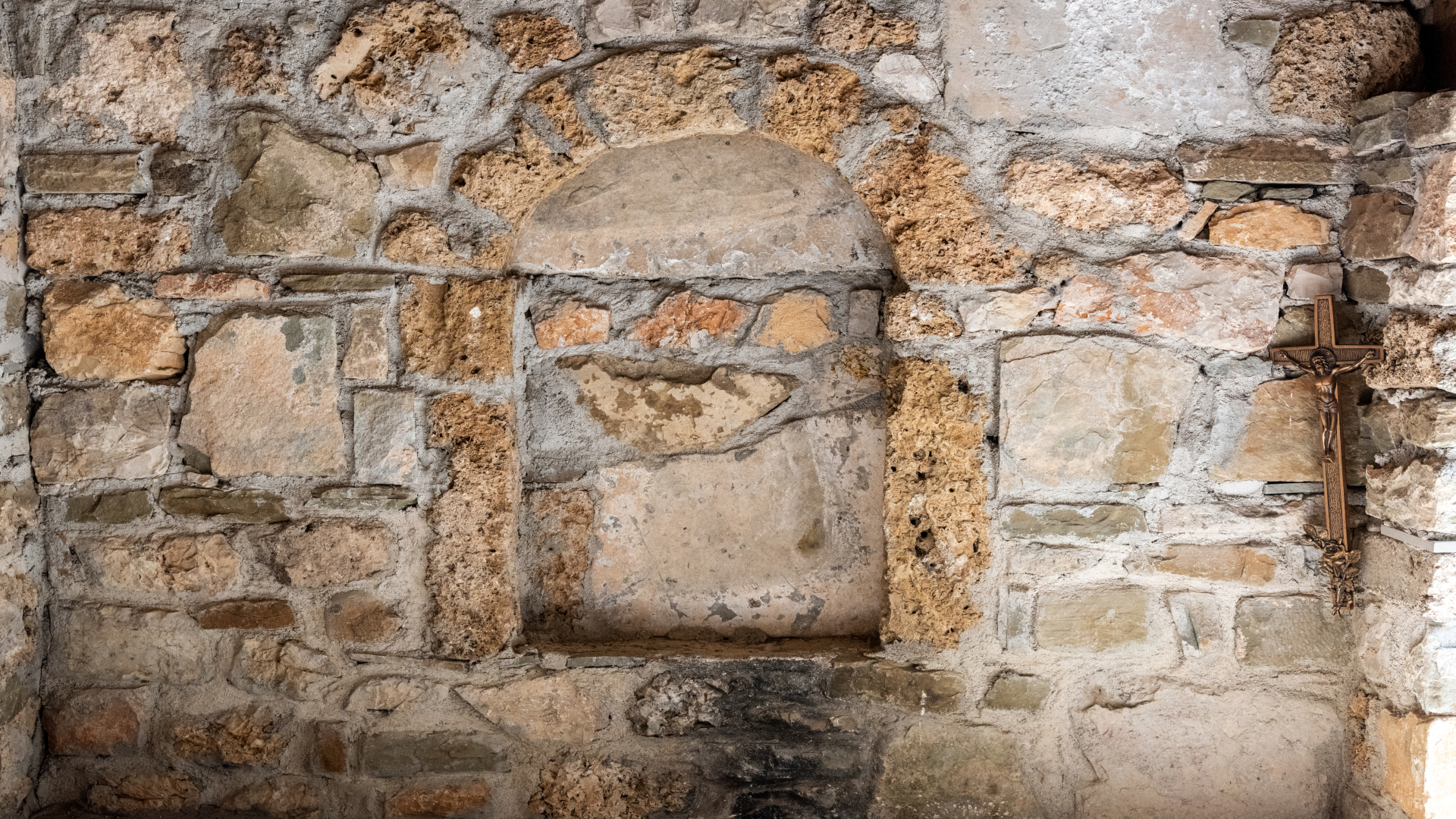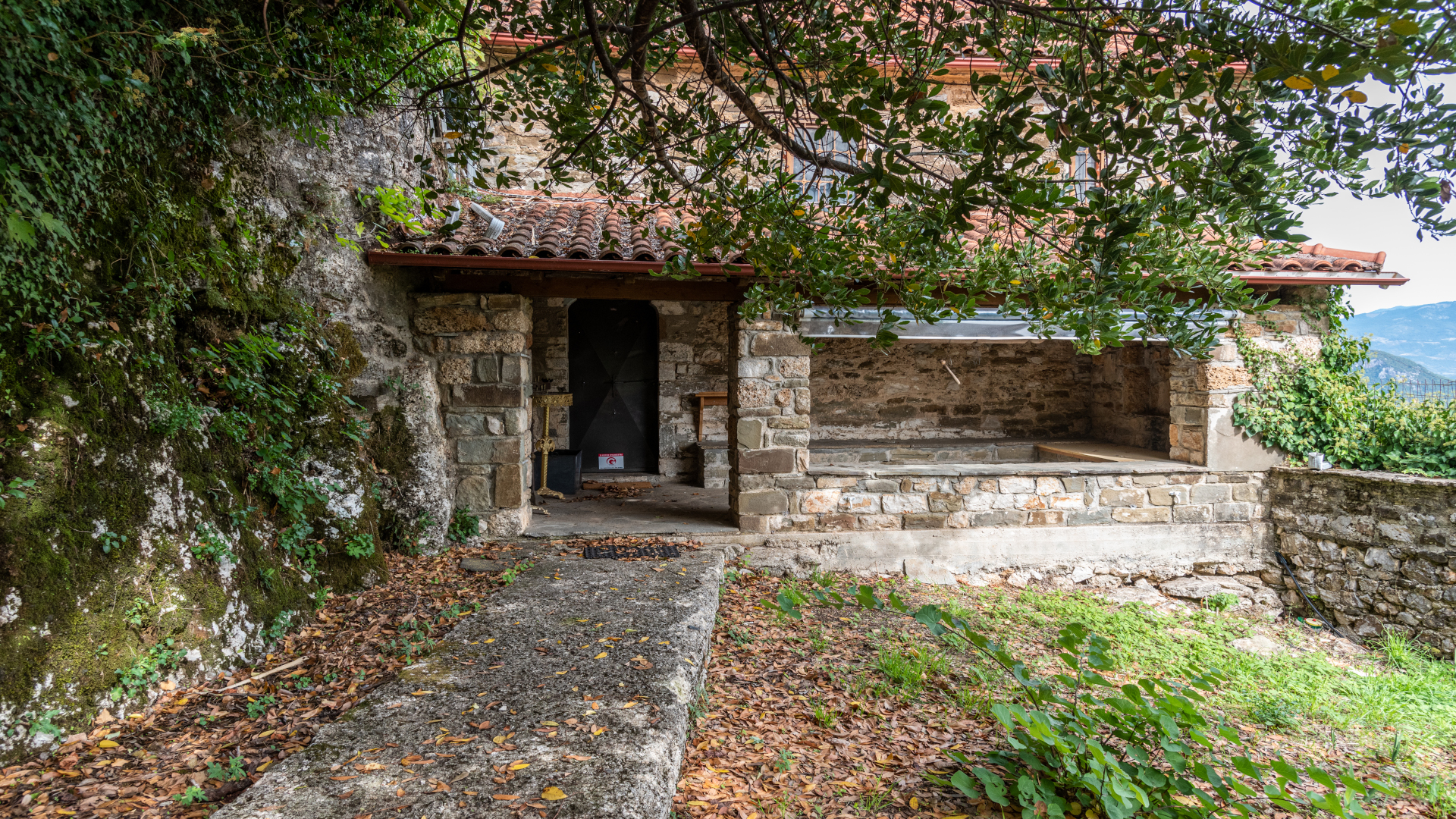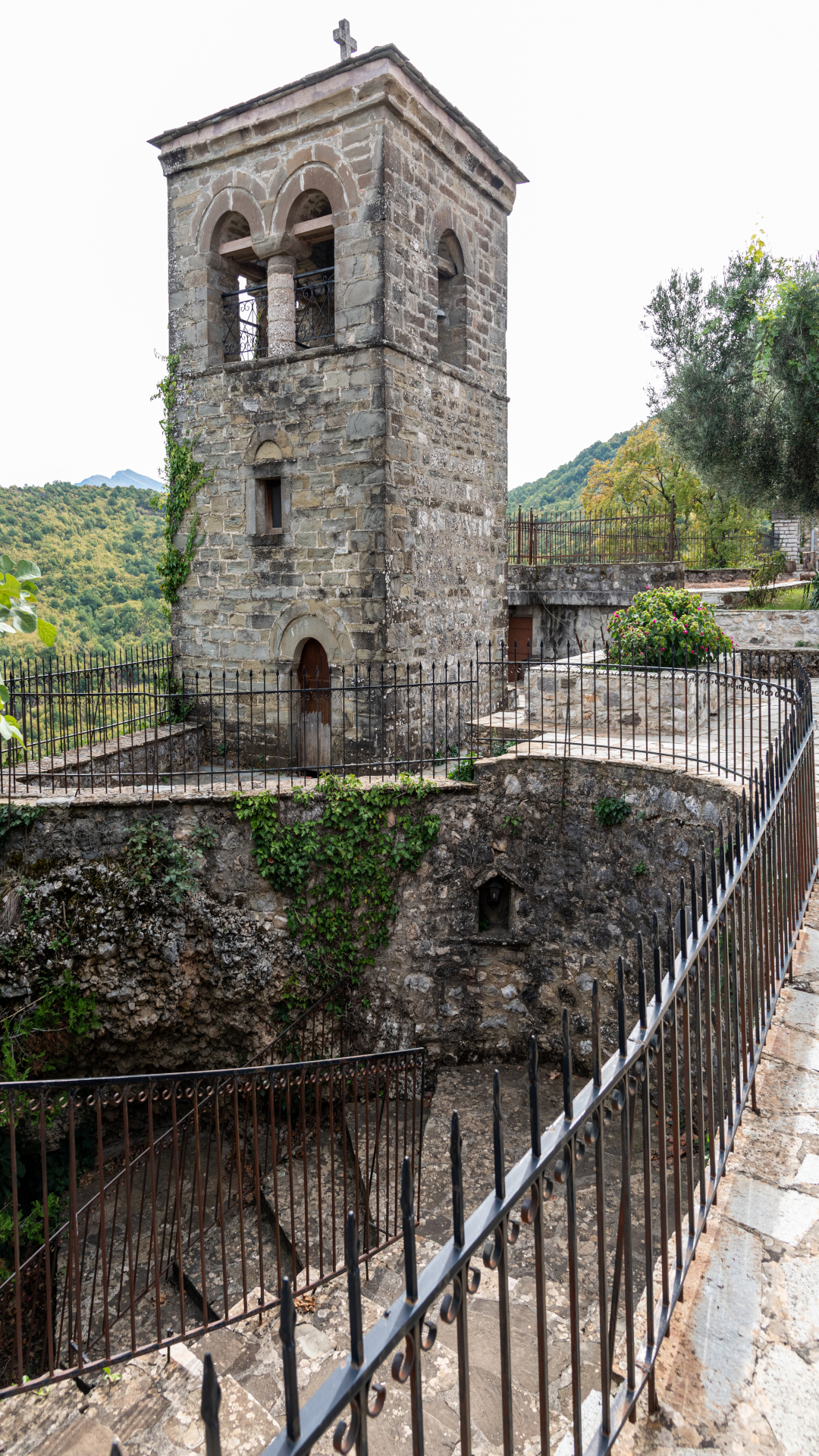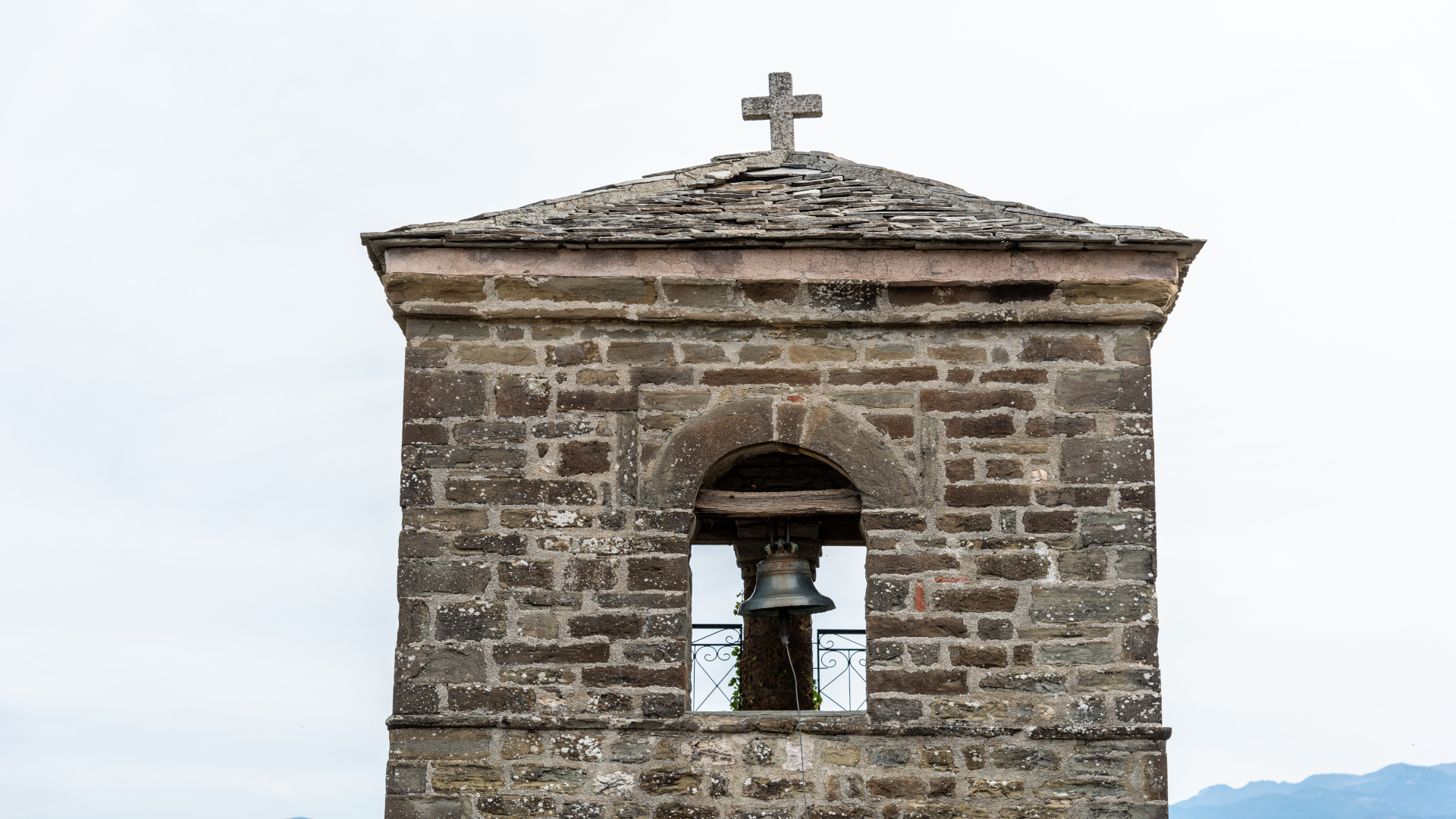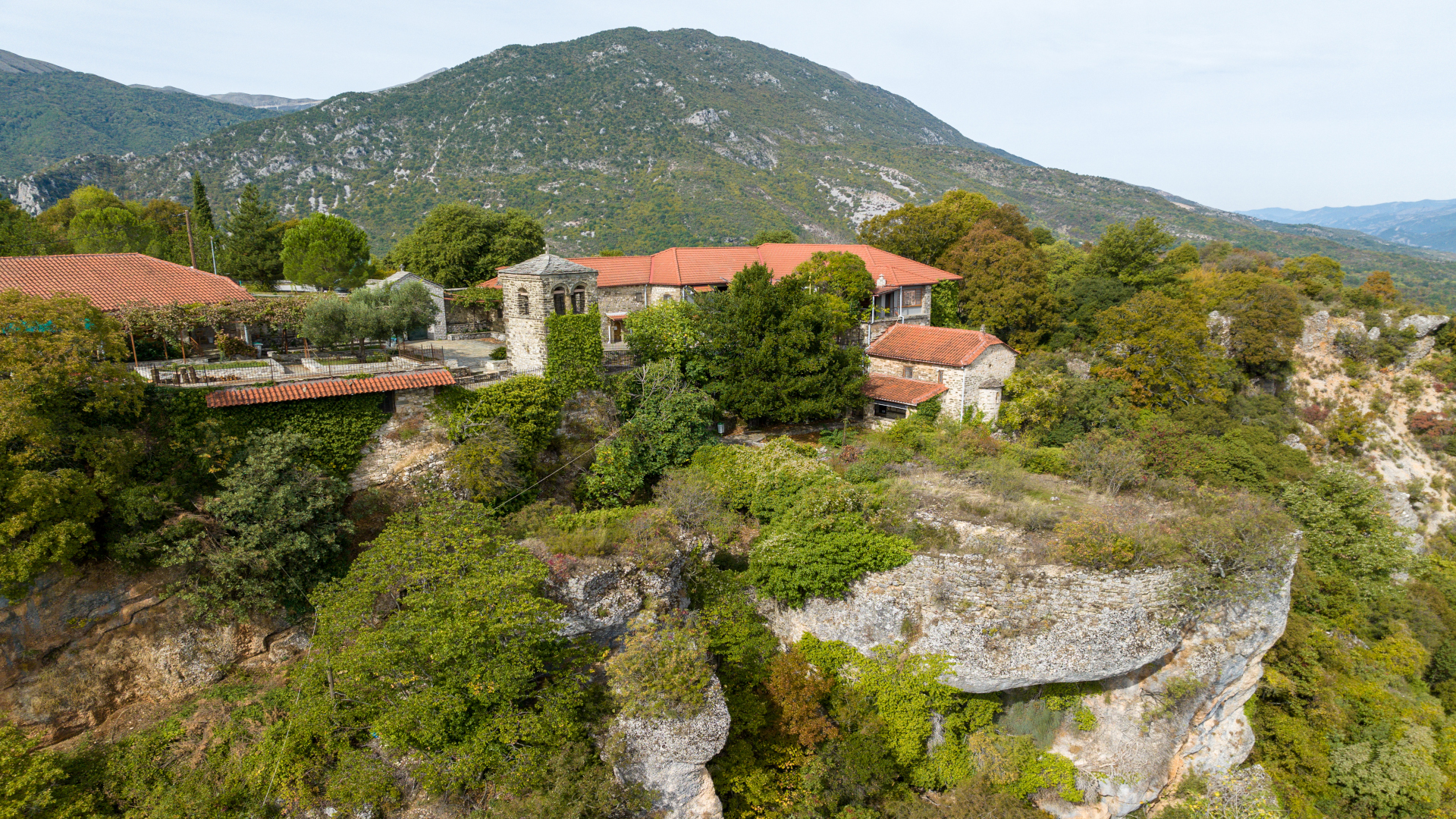Monastery of Taxiarches (Gouras), Aidonochori
Within 2 km, west of Aidonochori and on a typical rocky and fortified location, is the Monastery of Taxiarches Gouras. The Monastery was built in its current location in the 16th century and has a wonderful view towards the confluence of the Aoos and Sarandaporos rivers, as well as the surrounding area. It was one of the most important and wealthy monasteries of Epirus with glebes in Romania. For centuries the monastery was the religious and spiritual center of the region and helped the inhabitants of the surrounding villages in various ways in difficult times. The monastery's catholicon, dedicated to the Taxiarches, was completely destroyed by the Turks in 1829. Attempts to rebuild it from scratch, in the period 1854-1857, were not successful, thus today only the foundations of the church can be seen on a distinctive massive rock. However, a little further, the chapel of Agios Charalambos, which dates from the 17th century and has remarkable half-destroyed hagiographies, is still preserved. Under the sanctuary of the temple there is a vaulted crypt, 2 meters deep, where a few dozen people can fit. Church services take place in the chapel of Agios Charalambos when the Monastery celebrates. The Monastery is surrounded by high walls, thus acquiring a fortress style, while in its surroundings, in addition to the monks' cells, there were laboratories and a school that had been operating since the 16th century. Recently, most of these buildings have been restored and during the summer months children and youth camps operate under the responsibility of the Holy Metropolis of Dryinoupolis, Pogoniani and Konitsa. The monastery celebrates on November 8 (the feast of the Taxiarches) and on February 10 (the feast of Agios Charalambos).
Photos
Within 2 km, west of Aidonochori and on a typical rocky and fortified location, is the Monastery of Taxiarches Gouras. The Monastery was built in its current location in the 16th century and has a wonderful view towards the confluence of the Aoos and Sarandaporos rivers, as well as the surrounding area.
It was one of the most important and wealthy monasteries of Epirus with glebes in Romania. For centuries the monastery was the religious and spiritual center of the region and helped the inhabitants of the surrounding villages in various ways in difficult times.
The monastery’s catholicon, dedicated to the Taxiarches, was completely destroyed by the Turks in 1829. Attempts to rebuild it from scratch, in the period 1854-1857, were not successful, thus today only the foundations of the church can be seen on a distinctive massive rock. However, a little further, the chapel of Agios Charalambos, which dates from the 17th century and has remarkable half-destroyed hagiographies, is still preserved.
Under the sanctuary of the temple there is a vaulted crypt, 2 meters deep, where a few dozen people can fit. Church services take place in the chapel of Agios Charalambos when the Monastery celebrates.
The Monastery is surrounded by high walls, thus acquiring a fortress style, while in its surroundings, in addition to the monks’ cells, there were laboratories and a school that had been operating since the 16th century.
Recently, most of these buildings have been restored and during the summer months children and youth camps operate under the responsibility of the Holy Metropolis of Dryinoupolis, Pogoniani and Konitsa.
The monastery celebrates on November 8 (the feast of the Taxiarches) and on February 10 (the feast of Agios Charalambos).

